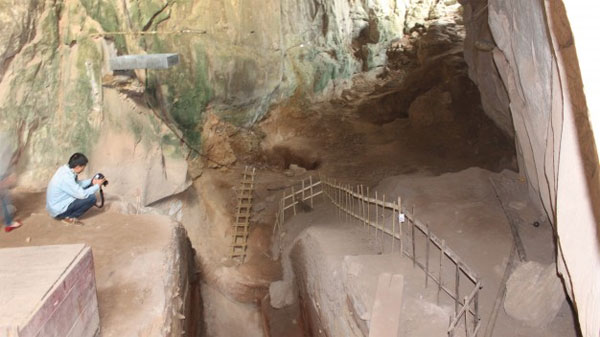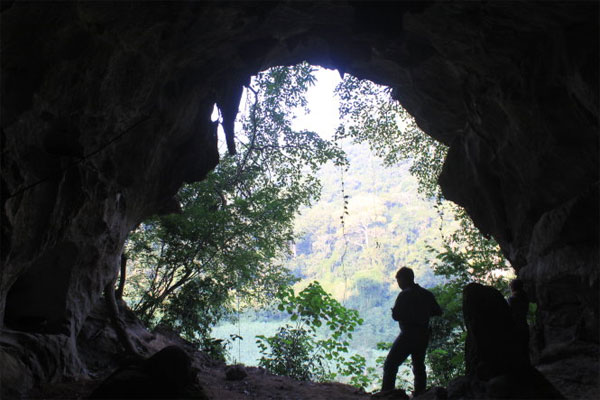Many discoveries at the archaeological site of Con Moong cave
At the international scientific conference on Con Moong Cave (Thanh Hoa) and the archaeological site of the surrounding area on October 30, Vietnam Archaeological Institute announced many findings after archaeological excavations at di just this.
>>>Detecting traces of people near Con Moong cave
>>> Discover many relics of ancient Vietnamese people
Con Moong Cave in Mo Village, Thanh Yen Commune, Thach Thanh District (Thanh Hoa) has an absolute height of 147m, a relative altitude of 32m, located in the limestone mountains of Dong Giao Formation, about 240 million years.

Archaeological excavations at Con Moong cave (Thanh Hoa) - (Photo: Ha Dong)
From November 2013 until now, the scientific cooperation team between the Vietnam Institute of Archeology and the Institute of Archeology - ethnic Novosibirsk (Russian Federation) has completed excavation of 14m 2 hole at Con Moong cave site.
According to information from the workshop on October 30, archaeologists have now confirmed the thickness of the site is 9.5m thick at Con Moong cave. This is one of the sites with thick strata and is well preserved in Vietnam and Southeast Asia.
In the area of Con Moong cave, archaeologists have discovered 10 different structural layers. In grades 1 to 6, labor tools, animal bones and mollusk shells were found. Grades 7 through 10 have quartz tools, most concentrated relics are grade 10 (depth from -8.5m to -9.5m).

Con Moong Store (Thanh Hoa) - (Photo: Ha Dong)
Archaeologists have recorded four stages of cultural development in Con Moong Cave.
At each stage of the discovery of ancient relics such as stone pebble tools, tools for shells, pointed nose, quadrilateral axes and Da But pottery; there are graves buried in crevices, knees, sprinkled with gold, buried in stone tools and shells, mass graves include many individuals.
Archaeologists believe that many new and outstanding discoveries in the past archaeological excavations are new rock culture with Hoa Binh money and after Hoa Binh.
Cultural remains in the Con Moong cave floor have shown the tradition of traditional cave and residence using stone tools and the evolution of types, techniques of tooling, gas transformation post-adaptation and adaptation of people throughout ten thousand years.
With the results of excavation of Con Moong cave, Vietnam has added the industry of quartz stone in the Late Pleistocene period (the evolution of the ancient climate from the cold and dry end of the glacial period) in Vietnam.
- Detecting traces of people near Con Moong cave
- 400 new information about discovery, archaeological research
- Taste of pepper 13,000 years
- New discoveries about Stone Age people in Spain
- 10 forgotten archaeological discoveries have been found again
- Archaeological site on Mount Camel
- The archaeological site is known as the
- The site of the archaeological site of Hoang Thanh
- For the first time, the metal tomb in the cave was discovered in Tuyen Quang
- Kernavé archaeological site - World cultural heritage in Lithuania
- Archaeological site of Lenggong valley
- Discover the oldest traces of modern Europeans
 Discovered an ancient centipede fossil 99 million years old
Discovered an ancient centipede fossil 99 million years old Discovered bat-like dinosaurs in China
Discovered bat-like dinosaurs in China Discovered a 200-year-old bronze cannon of the coast
Discovered a 200-year-old bronze cannon of the coast Discover 305 million-year-old spider fossils
Discover 305 million-year-old spider fossils